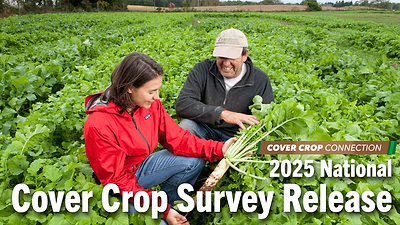If you haven’t gotten the fall crops planted, you intended to plant because of the extremely wet conditions, and the Risk Management Agency’s (RMA) final plant dates have gone and past, you may be looking at taking a “prevented planting” crop insurance indemnity. When things dry up this may be a good time to plant a cover crop on those acres to ensure your fields’ soil health and long-term productivity. This may also be an opportunity to experiment with cover crops with very little financial risks.
Intense storm events have resulted in excessive soil erosion. Fields have been left with large gullies and areas where the topsoil washed away. A tillage operation may be needed for weed control, and to smooth out the field. A cover crop planted after that tillage pass will help cover the soil surface. This will help prevent additional soil erosion and additional loss of nutrients, carbon and residue.
A properly designed cover crop will have the potential to capture nutrients, fix nitrogen, build organic matter, suppress weeds, control erosion, provide livestock forage and provide other soil health improvement benefits. Typically, a mix with several different plant types and species would be used.
A summer mix should include forage sorghums, sorghum-sudans and/or millets. These species help feed the soil biology, such as mycorrhizal fungi and rhizobia bacteria. These organisms help build soil structure and tilth, which increases water infiltration and soil water holding capacity. They also provide a lot of above ground growth that shade the ground which helps with weed suppression and evaporation loss.
Legumes the mix, if properly inoculated, can fix nitrogen in the soil. The plants would need to be allowed to grow at least to the flowering stage to get the most benefit. There several warm season legume species to pick from that are adapted to Kansas that would reach the proper maturity level if planted in the next couple of weeks.
Brassicas and broadleaves, like radishes and sunflowers, have deep tap roots that can penetrate compacted soils and scavenge nutrients deep in the soil. Some of these species can also be great habitat for beneficial insects and pollinators.
Consider what herbicides you might have previously used on the field. Many pre-emergent herbicides provide long term residual weed control have long plant back restrictions. These herbicides could inhibit the germination and growth of many cover crop species. Always check your herbicide label and if in doubt consult with your supplier or crop advisor.
Before planting a cover crop on prevented planting acres always check with your crop insurance agent. Many of the haying, grazing and harvest restrictions have recently changed for the 2019 crop year.



